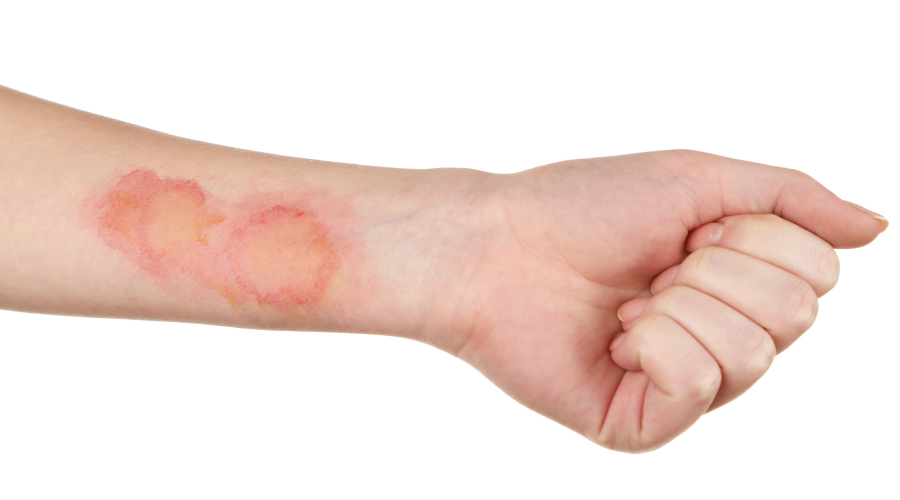Understanding Bacterial Skin Infections
Bacterial skin infections are common and can range from mild to severe. These infections occur when bacteria, such as Staphylococcus aureus or Streptococcus, enter the skin through cuts, abrasions, or other breaches in the skin barrier. Once inside, the bacteria can multiply and cause infections, leading to symptoms like redness, swelling, warmth, pain, and sometimes pus formation. Cephalexin 500Mg is one of the most effective antibiotics prescribed for treating various bacterial skin infections.
Types of Bacterial Skin Infections
Bacterial skin infections can manifest in several forms, each with distinct characteristics:
-
Cellulitis: This is a deep skin infection that affects the dermis and subcutaneous tissues. It often presents with redness, swelling, warmth, and tenderness in the affected area. If left untreated, cellulitis can spread to other parts of the body.
-
Impetigo: Common among children, impetigo is a contagious superficial skin infection characterized by red sores that quickly rupture, ooze, and form a yellow-brown crust. It typically occurs on the face, around the nose and mouth, but can spread to other parts of the body.
-
Folliculitis: This infection involves the hair follicles and can result in small, red, and painful bumps on the skin. In some cases, folliculitis can develop into more severe conditions such as boils or carbuncles.
-
Boils (Furuncles): Boils are painful, pus-filled bumps that develop when bacteria infect and inflame one or more hair follicles. They often appear on the face, neck, armpits, or buttocks.
-
Carbuncles: A more severe form of boils, carbuncles are clusters of boils that are connected under the skin. They can cause deeper and more severe infections and often require medical treatment.
-
Erysipelas: This is a superficial skin infection that extends into the cutaneous lymphatics. It causes raised, red, and inflamed patches on the skin, often with well-defined edges. Erysipelas can also cause fever and chills.
-
MRSA (Methicillin-resistant Staphylococcus aureus): This is a type of bacterial skin infection caused by a strain of staph bacteria that is resistant to commonly used antibiotics, including methicillin. MRSA infections can range from mild skin infections to more severe and life-threatening conditions.
When to Use Cephalexin 500Mg
Cephalexin 500Mg is an oral antibiotic that is commonly prescribed to treat bacterial skin infections. It belongs to the cephalosporin class of antibiotics and works by inhibiting the synthesis of the bacterial cell wall, leading to the death of the bacteria. Cephalexin 500Mg is particularly effective against gram-positive bacteria like Staphylococcus and Streptococcus species, making it a go-to treatment for many types of skin infections.
Dosage and Administration of Cephalexin 500Mg
The dosage of Cephalexin 500Mg depends on the severity and type of bacterial skin infection. For adults, the usual dosage is 500mg taken every 6 to 12 hours, depending on the doctor’s prescription. The treatment typically lasts for 7 to 14 days, but it’s crucial to follow the healthcare provider’s instructions regarding the duration of antibiotic therapy. Even if symptoms improve before the end of the prescribed course, it’s important to complete the full treatment to prevent the infection from returning and to reduce the risk of developing antibiotic resistance.
Possible Side Effects of Cephalexin 500Mg
While Cephalexin 500Mg is generally well-tolerated, some patients may experience side effects. Common side effects include gastrointestinal symptoms such as nausea, vomiting, diarrhea, and stomach pain. Some individuals may also experience allergic reactions, which can range from mild skin rashes to more severe reactions like anaphylaxis. If any severe side effects occur, it’s important to seek medical attention immediately.
Preventing Bacterial Skin Infections
Preventing bacterial skin infections involves maintaining good hygiene practices, such as regular hand washing, keeping wounds clean and covered, and avoiding sharing personal items like towels and razors. It’s also important to treat any minor cuts, scrapes, or insect bites promptly to prevent bacteria from entering the skin.
When to Seek Medical Help
While many bacterial skin infections can be treated effectively with Cephalexin 500Mg, it’s important to seek medical help if the infection does not improve after a few days of treatment, if it worsens, or if you develop signs of a more serious infection, such as fever, chills, or spreading redness. In such cases, the infection may require additional treatment or a different type of antibiotic.
Conclusion
Bacterial skin infections can range from mild to severe, but with the right treatment, most can be effectively managed. Cephalexin 500Mg is a commonly prescribed antibiotic that is effective against a variety of bacterial skin infections. By following your healthcare provider’s instructions and taking the full course of antibiotics, you can ensure a successful recovery and prevent the recurrence of infection. Additionally, practicing good hygiene and seeking timely medical help when necessary can help protect you from bacterial skin infections in the future.

